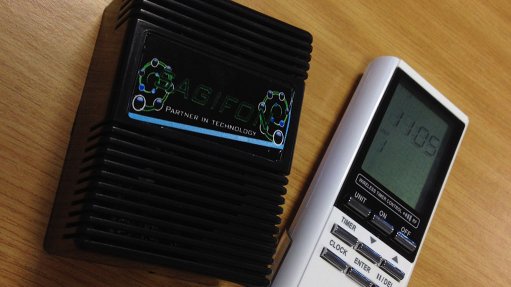
SIMPLIFICATION All timer and on/off programming is performed through using the compact remote control transmitter
A remote switch with a timer function can assist in mitigating the risk of ordinary users being accidentally electrocuted because they are not familiar with complex electrical systems, says Midrand-based technology innovation company Sagifon.
Sagifon chief technology officer Billy Ruyobeza tells Engineering News that the company’s new remote timer transmitter was launched last month, and works in conjunction with a receiver unit to open and close electrical circuits.
“The remote transmitter can easily be used by an untrained operator and provides 12 timer routines over 24 hours. The device also features a simple override function, which is activated by switching the receiver unit on or off,” he says.
Ruyobeza adds that, when the timer function is overridden, the unit will return to its normal timer routines after a manual switch- off, without any additional input from the user.
All timer and on/off programming is performed using the compact remote-control transmitter, and up to 16 receiver units can be linked to one transmitter unit. The transmitter, which has a range of 30 m, uses radio frequency and is not limited to line-of-sight operation.
Two batteries power the transmitter unit – one powers the liquid crystal display screen and another the signal transmitter. Both batteries last about eight months.
Overcoming Barriers
Sagifon extensively investigates niche markets for new technology prior to developing products.
“We discovered that people were having difficulty in using basic timers for everyday functions, such as to switch geysers or lights on and off,” says Ruyobeza, adding that most timers require a qualified electrician to install the unit, adding more cost to the equation, which often dissuades users from using timers.
Further, once a timer is installed, its operation is often complicated: a timer schedule has to be set and the timer units are often located in confined spaces.
“Our remote control unit significantly reduces the time of contact with live circuits, as the receiver unit never requires further attention once it has been installed, making it maintenance free,” he says.
In the mining industry, electrical load routines for equipment change frequently, owing to the evolving nature of mines. This operation would usually require an electrician to change the settings on numerous timers, says Ruyobeza. “With our units, all the receiver units can be set with the push of a button.”